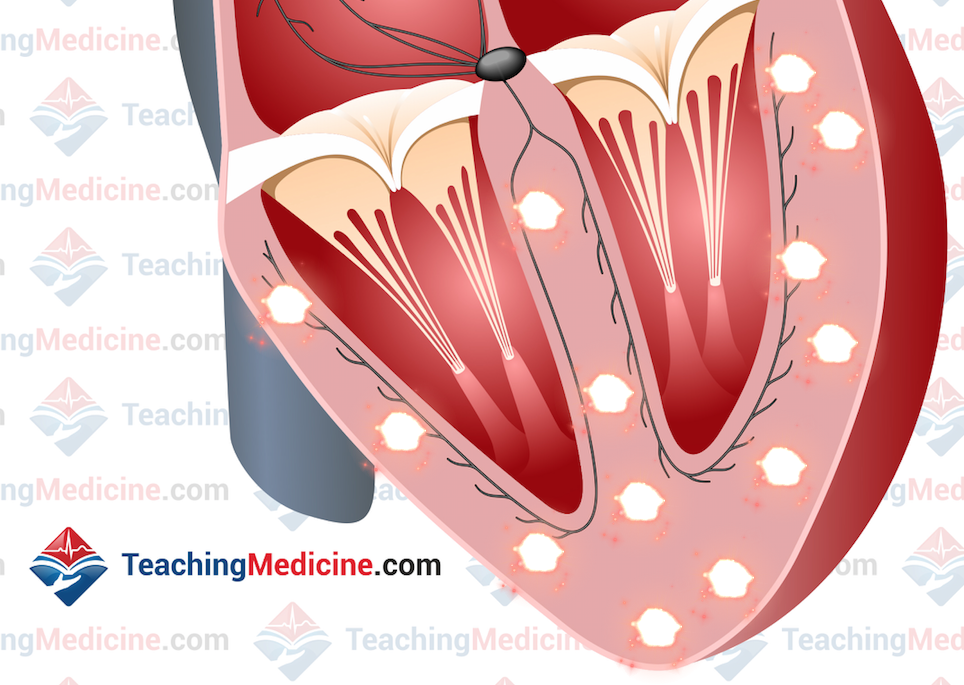VF (Ventricular Fibrillation) Diagnostic criteria: (boldfaced with * indicates an important feature)- * Rate: 0
- * Rhythm: indeterminant (not applicable)
- * P waves: none
- * PR interval: not applicable
- * QRS: none
Do not confuse ventricular fibrillation with atrial fibrillation. Many people walk around with atrial fibrillation and it is a common rhythm. Ventricular fibrillation is not compatible with life.
ElectrophysiologyThe origin of ventricular fibrillation is the ventricles. That is why the word "ventricular" is in the title. This rhythm
does not come from the sinus node. One way to think of ventricular fibrillation is that there are numerous little chaotic electric circuits within the ventricles, each forming a random pacemaker:

Ventricular fibrillation results in no QRS complexes. Therefore, there is no organized or co-ordinated electrical activity in the ventricle and as a result, no co-ordinated mechanical contraction. Therefore, there are no heartbeats and the result is cardiac arrest.
Clinical Significance:Ventricular fibrillation is a medical emergency. You cannot survive with ventricular fibrillation and the treatment for VF is CPR (cardiopulmonary resuscitation), electrical shocks called defibrillation (named because it removes fibrillation), intravenous medications, a breathing tube and ventilator, and often transfer to an intensive care unit (ICU) for ongoing life support.
Causes of VF include:
- ischemia (lack of oxygen changes the electrical properties of the heart)
- infarction (produces scars and the region around the scar often have abnormal electrical properties)
- heart failure (a strained heart will be electrically abnormal)
- dilated cardiomyopathy (a stretched out heart will have some fibrosis and abnormal conduction)